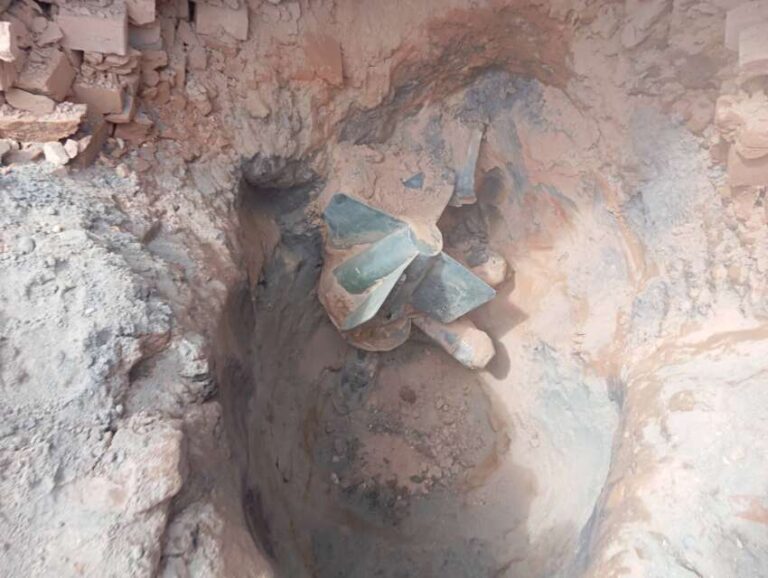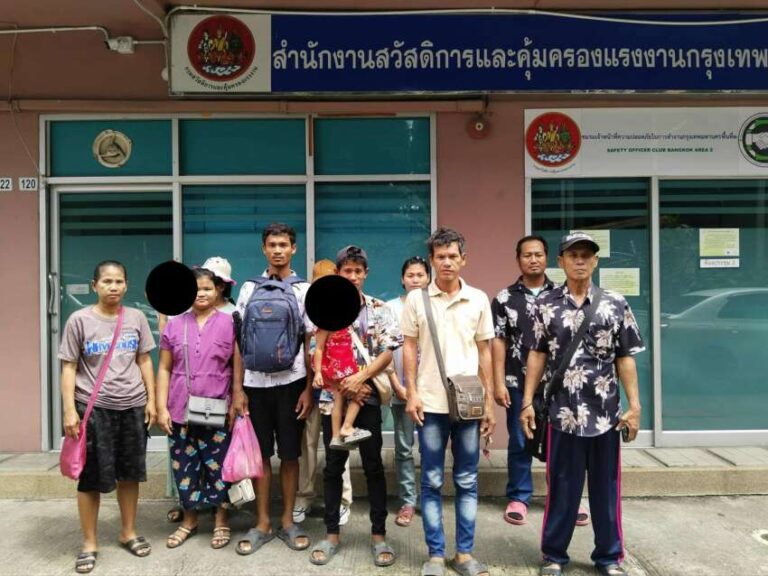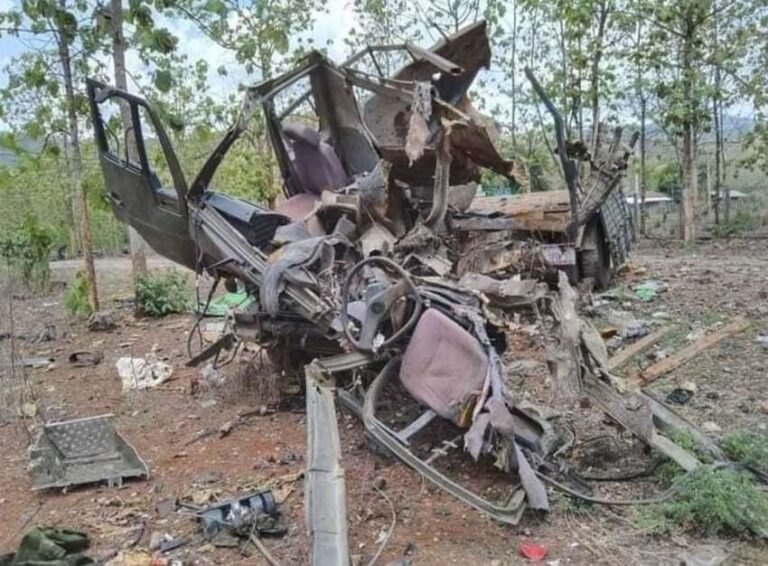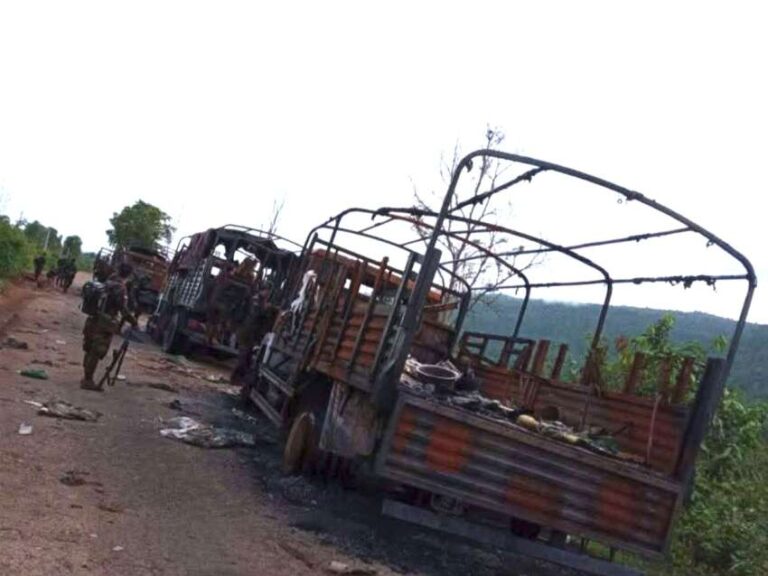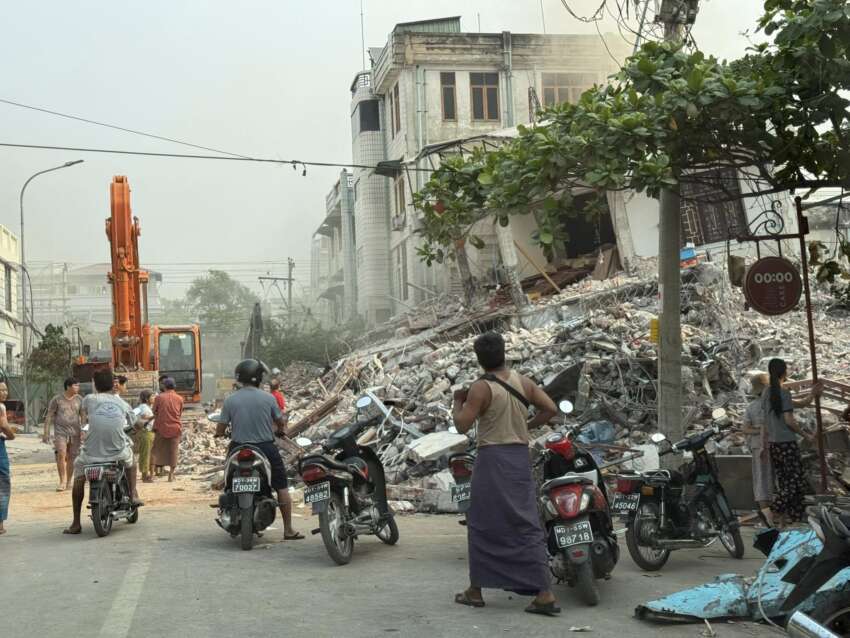
The military council has issued orders regarding buildings damaged by the recent earthquake in Mandalay, requiring aesthetic barriers around damaged structures, permits for repairs, and the suspension of all ongoing construction projects. According to Mandalay residents who spoke to Yangon Modern News Agency, these directives have created additional burdens for those already struggling with earthquake damage. The Mandalay City Development Committee has been distributing warning notices to property owners, instructing them to maintain presentable appearances of damaged buildings, including using metal sheets as barriers after demolition. These notifications have also been published on their Facebook page.
The situation has become particularly challenging for affected residents, as construction material prices have increased three to four-fold. One owner of a high-rise building that was tilted due to the earthquake expressed frustration, saying, ‘How can we make things look presentable when we don’t even have a place to live after our house collapsed? With construction materials costing three to four times more than before, how are we supposed to put up barriers? We’re in distress, and it’s impossible to focus on aesthetics.’ The military council’s demands for maintaining appearances have added to the financial burden of earthquake victims who are already struggling to recover from their losses.
The Mandalay City Development Committee has implemented a classification system for earthquake-damaged buildings, categorizing them into blue, orange, and red levels based on damage severity. The military council has announced that any repairs must be approved with certification from licensed engineers through formal applications to the committee. Furthermore, all construction projects in Mandalay’s six townships have been ordered to halt temporarily. The military council’s inspection team must verify the integrity of main support columns before allowing any construction work to resume. This bureaucratic process has created additional delays and complications for property owners trying to rebuild or repair their structures.
Residents have reported that while the military council has failed to provide adequate assistance to earthquake victims, they continue to issue various orders that exacerbate the suffering of affected people. Those applying for permission to demolish dangerous buildings are being told to wait at least three months, with priority apparently given to those who can afford to pay. This situation has created a two-tier system where wealthy property owners receive preferential treatment while others must wait, potentially in dangerous conditions. The combination of property damage, increased construction costs, and bureaucratic obstacles has created a significant humanitarian challenge for Mandalay residents affected by the earthquake, who now face both physical displacement and economic hardship without meaningful support from authorities.
